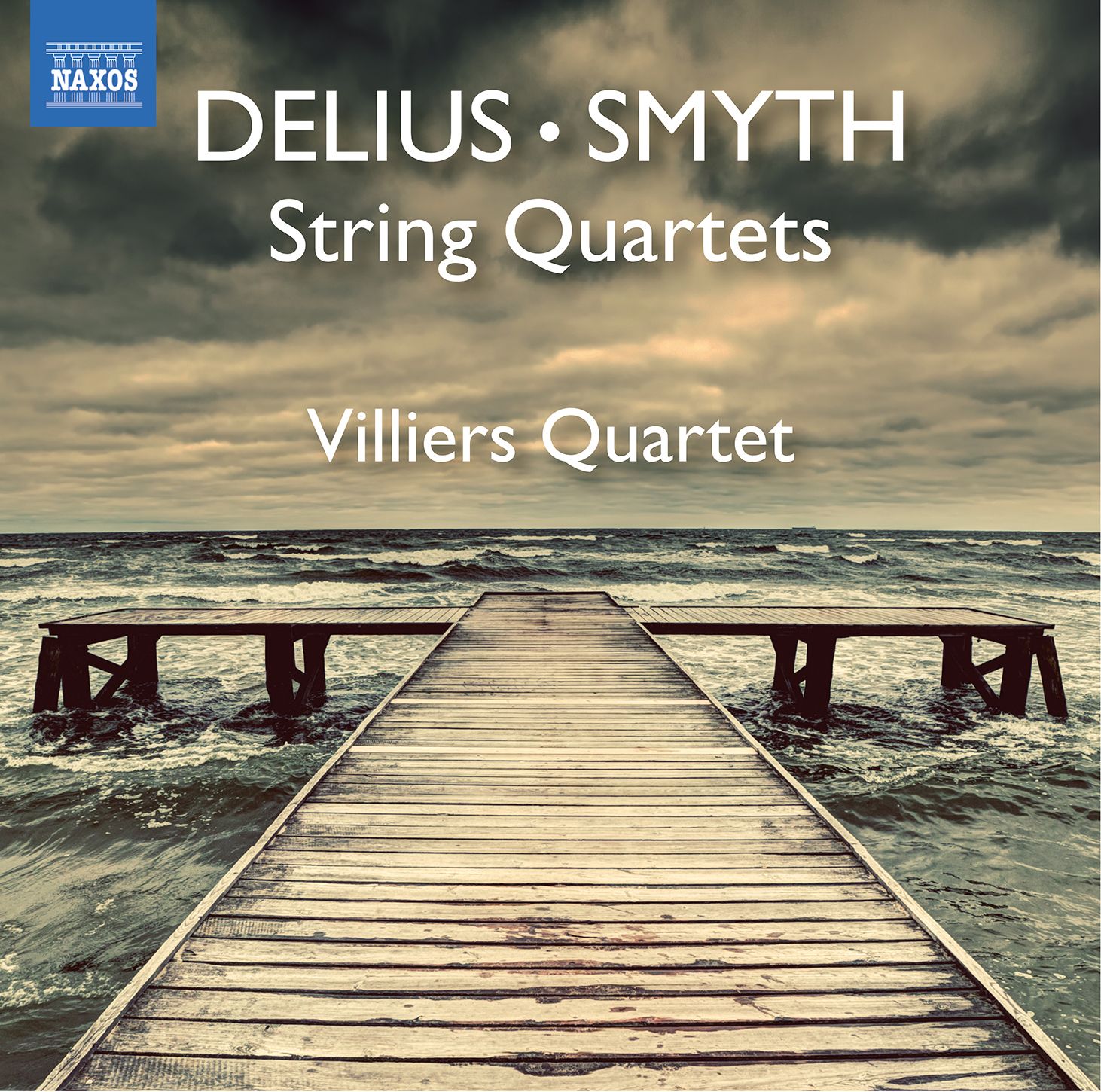Ethel Smyth and Delius String Quartets
What a great discovery this disc is - It is the Smyth that lingers most in the memory

Here at Classical Explorer we met the redoubtable Dame Ethel Smyth via a Proms performance of her opera The Wreckers last year (the annual Glyndebourne Prom). This disc offers a glimpse of the more intimate side of her music: the String Quartet in E-Minor. The first two movements were written in 1902, but the final two only came along a decade later, in 1912. Despite this, the work exists as a coherent whole. The viola is particularly prominent in Smyth’s piece (that insrument actually starts the work).
Smyth has a very individual voice (by all accounts, she was highly individual as a person as well!), but there is an identifiably English slant to the harmonies. The writing is complex at times, especially at the impassioned climaxes, and the Villiers Quartet (a group named after Villers Street in London) is magnificent in its realisation. Tuning in particular must be horrendously difficult in such passages, and they do not falter. Most important perhaps is the pronounced lyrical element (the movement is, after all, marked “Allegro lirico”:
The first movement ie expansive, particularly towards its close where the music seems to stretch itself out - which results in the m ost exquisite pianissimi from the Villiers Quartet.
The Scherzo reveals the extent fo Smyth'’s imagination in chamber music. Two Trios, and the way they interact with the Scherzo (particularly how one moves into the other) is genius. Maybe we should start using the word “genius” more often with Smyth - everything I have heard from her pen is miraculous (and who else wrote a Concerto for Violin and Horn?). Again, there are manu viola-led moments in this Allegro molto leggiero. There is a touch of A Midsummer Night's Dream about this music, but with an English accent:
The contrast to the Andante could hardly be greater: here the music is whispered, held-breath and often radiant. The control of all four of the players of the Villers Quartet is remarkable - as is their interpretative decision to bring out the modernism of some passages. Its length, too, balances that of the first movement perfectly:
Varied textures, melodies that flow (and flow from the heart, too) - this is a simply beautiful movement. The spiky nature of the fugato that opens the finale is slightly misleading, as soon we’re in folksy territory. Again, Smyth’s writing is uncompromising, and again the Villiers Quartet triumph. The recording allows every detail through (Ayriel Studios, North Yorkshire, a one man show - Producer, Engineer and Editor - from Michael Whight).
Delius wrote his early String Quartet in C-Minor in 1888, but it was rejected for performance and he was later to reuse the Scherzo for his mature Quartet of 1916–19 (which appears on Naxos 8.573586). Naxos explain what we hear here:
In 2018 the score of the two opening movements of the 1888 Quartet, long assumed lost, reappeared at auction and have been edited and reunited with the final two in this premiere recording, which adds significantly to our understanding of Delius’ early compositional directions.
The reconstruction is by Daniel M. Grimley (born 1973 – he also provides Naxos’ booklet notes).
Given that the work was initially rejected, this might be its first ever performance! It is simply lovely, and how fascinating to hear the early Delius’ musical processes, tighter than in some of the later works yet with windows into that characteristic sense of English timelessness:
How beautiful, too, the Trio of the second movement Scherzo. The melodies include large intervals but could never be described as ‘angular‘ - this is Delius‘ own brand of melodic invention. All four instruments get to shine here so it is worthwhile crediting the indivdual performers of the Villiers Quartet: Katie Stillman and Tamaki Higashi, violins; Carmen Flores, viola; Leo Melvin, cello):
The third movement is fascinating: whilst it is marked “Adagio, con molto espressione,” and that is indeed how it starts, it holds the most lovely Intermezzo - not to mention a mazurka! All in just a smidge over five minutes ...
The finale is marked “Agitato” as well as fast, and the Villiers Quartet captures this slightly anxious mood perfectly. There is a sense of endless invention from Delius’ pen here, and how effective the music’s darkening about a minute from the work’s close in preparation for the relentless rhythmic tread of the coda:
The Villiers Quartet recorded Delios’ 1916 String Quartet for Naxos also (coupled with the Elgar String Quartet) - an Amazon link for purchase is also given below.
What a great discovery this disc is - two pieces of note, including a World Premiere recording. It is the Smyth that lingers most in the memory on a purely musical level, but don‘t let that put you off hearing the Delius!
